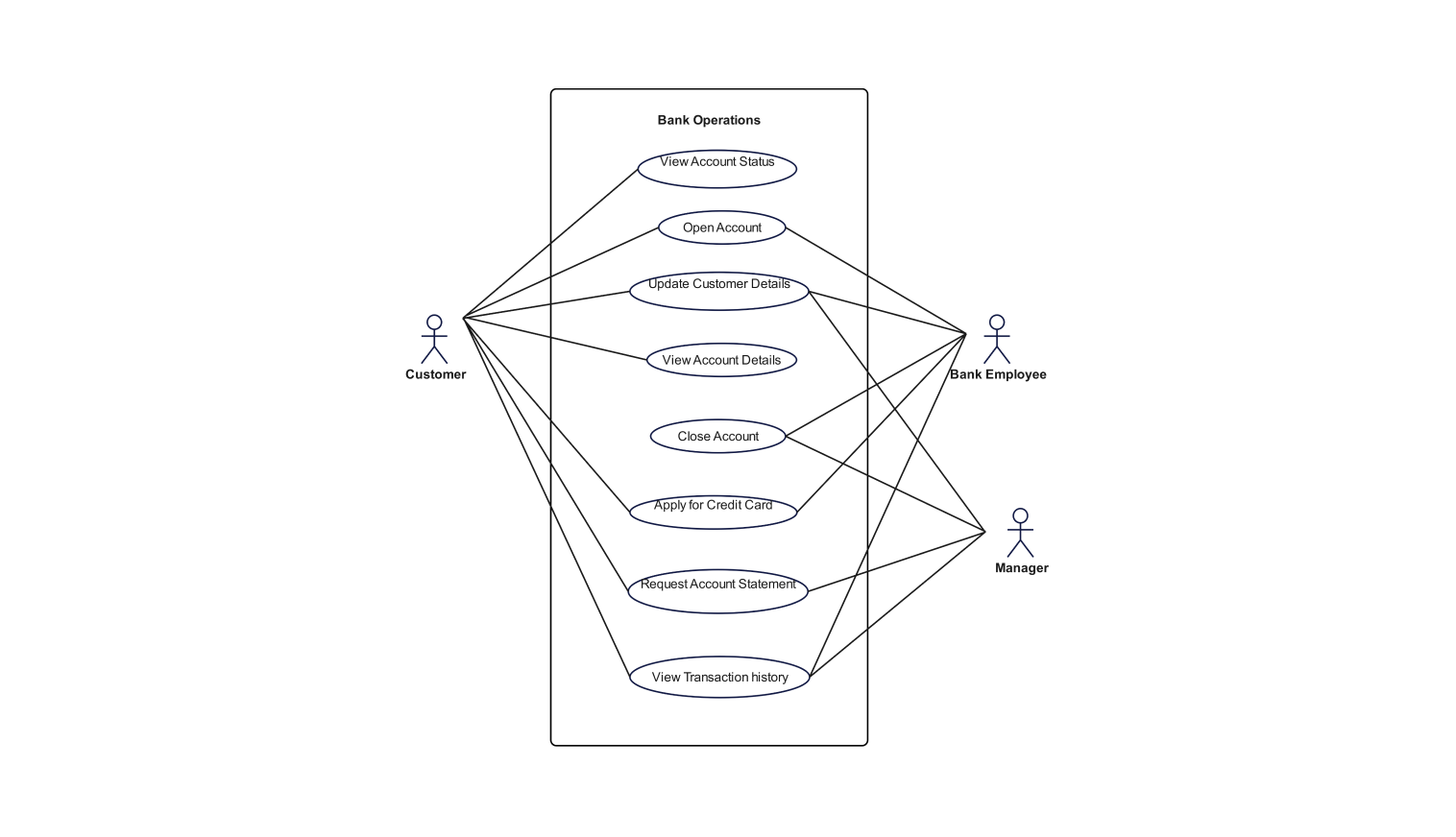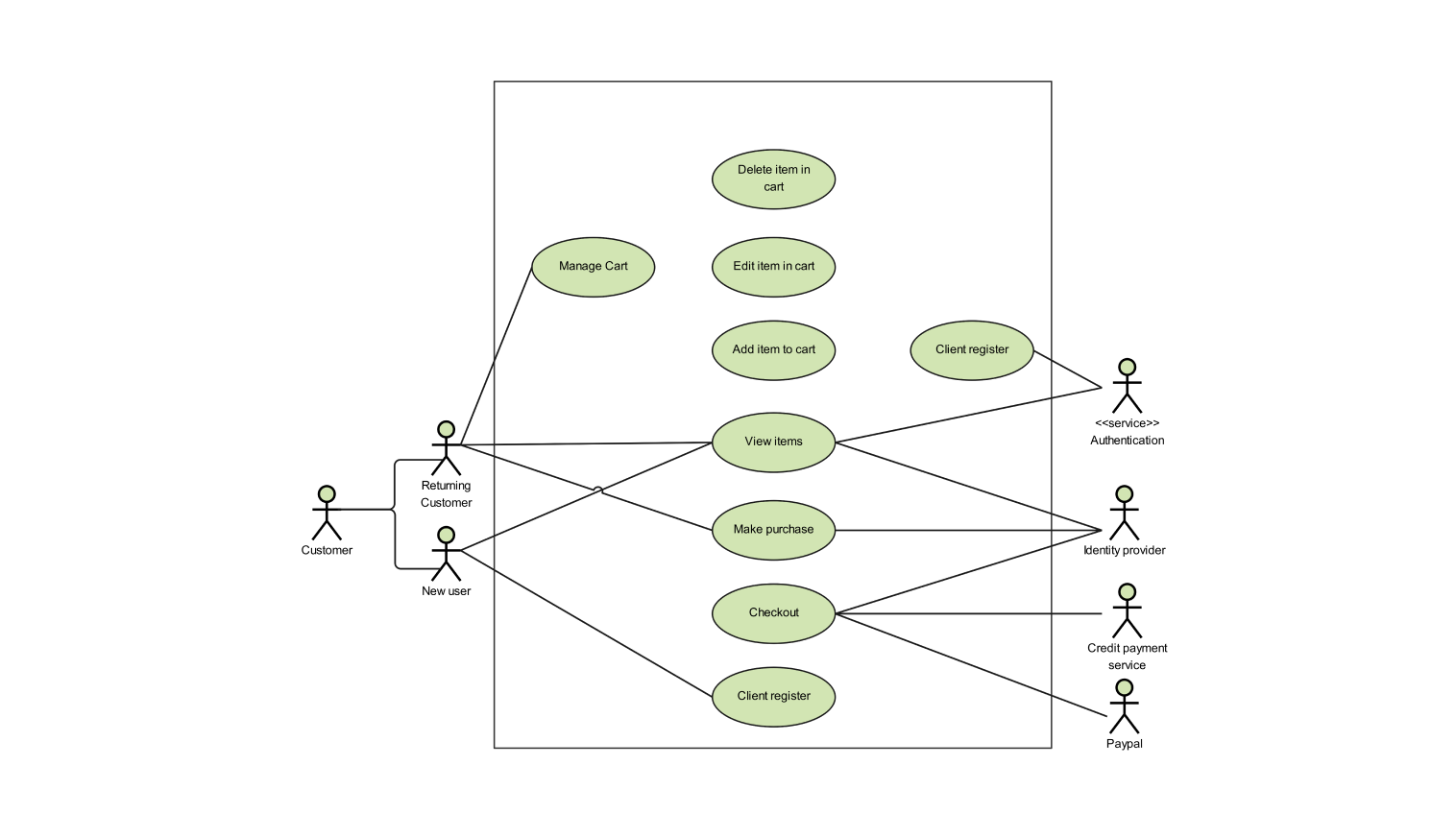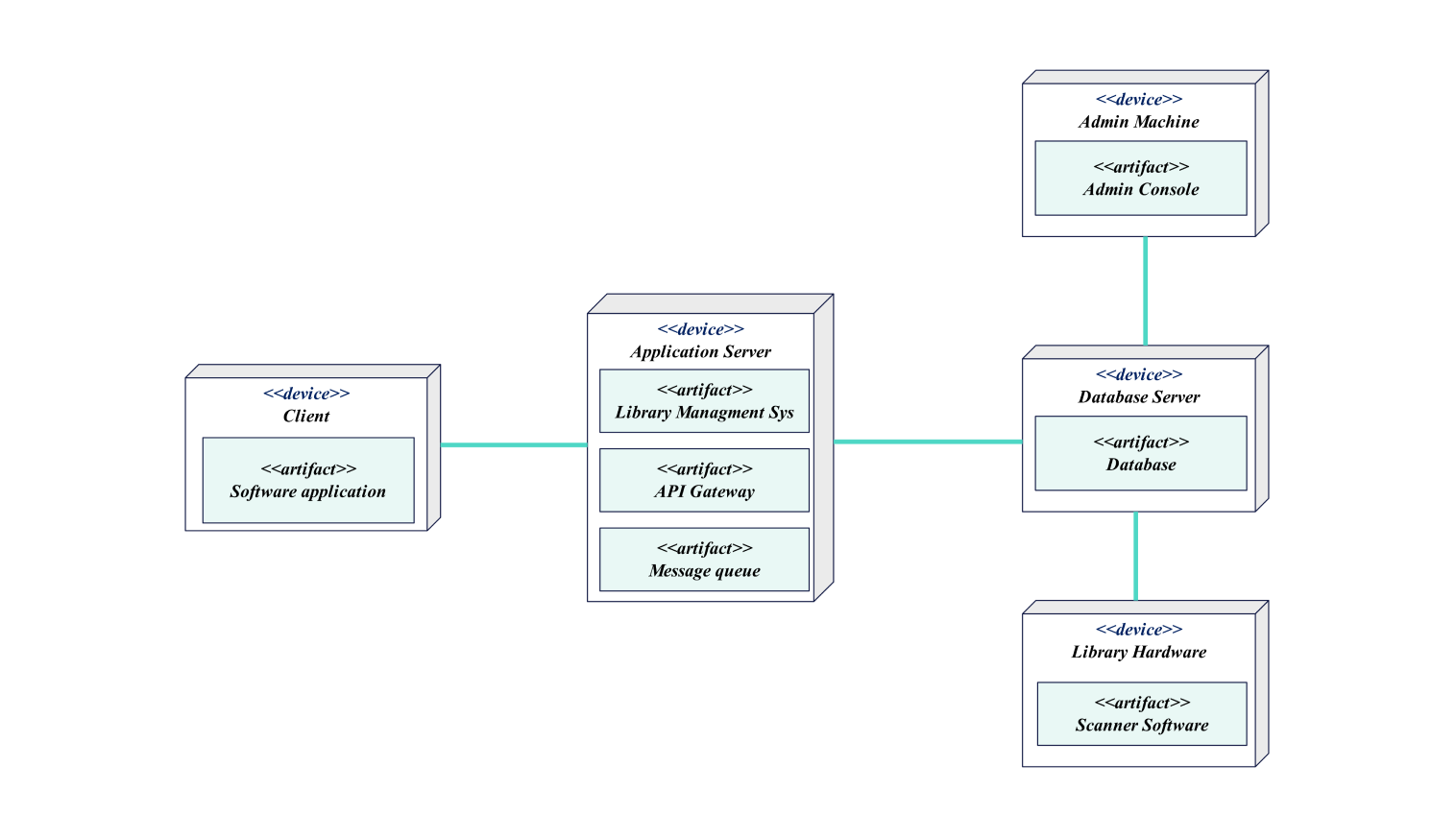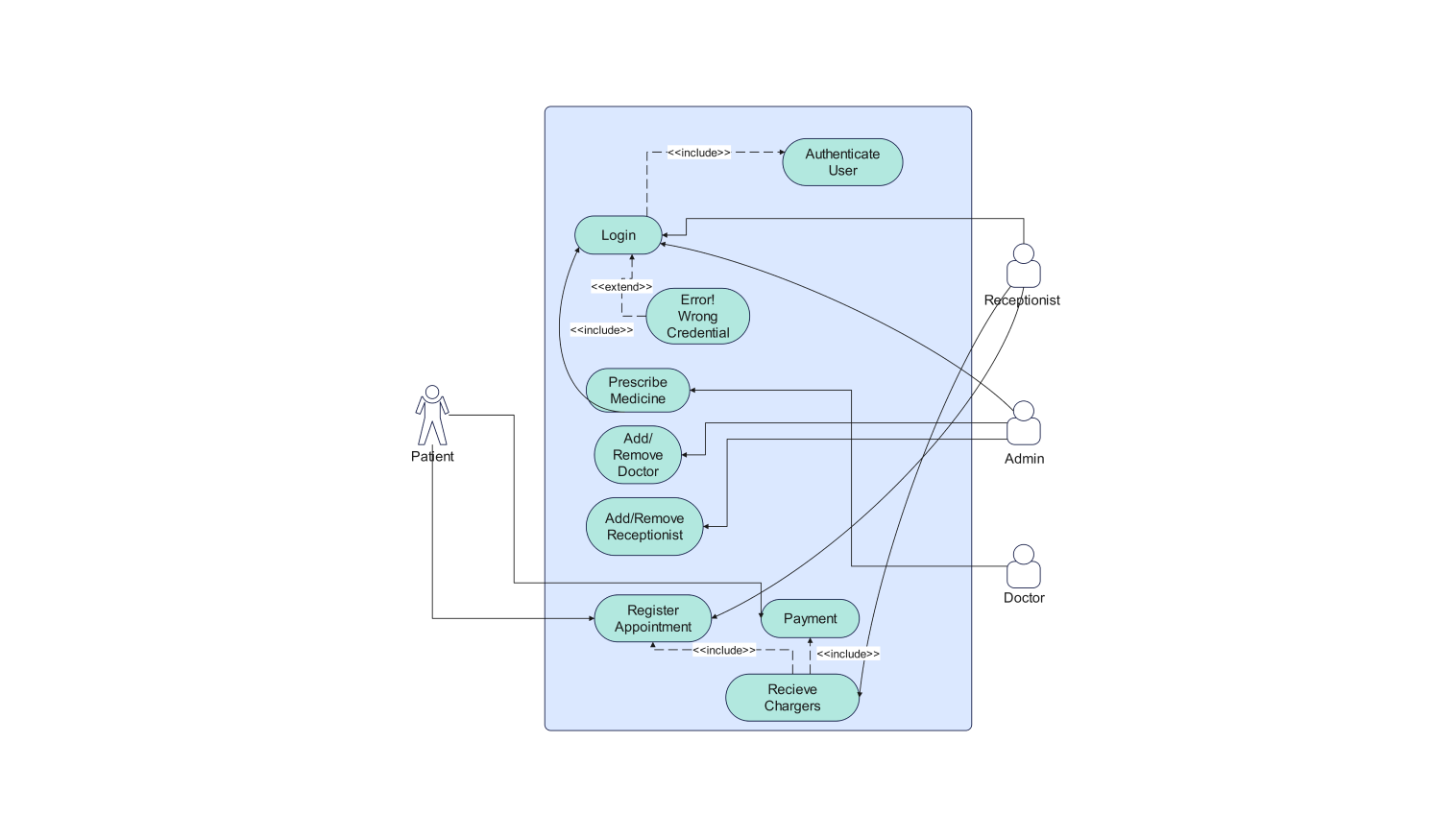- Templates
- UML templates
- Bank management use case diagram
About this template
Following is a use case diagram for the Bank Management System. It illustrates various operations and functionalities within a bank management system. The UML use case diagram also depicts how different actors interact with the system and their respective roles within the system.
The following use case diagram is made up of elements that include the actors, use cases, and the association between the actors with various use cases within the system.
The various actors involved in the Bank Management System consist of the Customer, the Bank Employee, and the Manager. The diagram illustrates how these actors interact inside the bank management system, their respective roles, and how these actors work together to achieve the overall functionality inside a bank management system.
The Use cases involved in the system include viewing account status, opening an account, updating customer details, viewing account details, closing an account, applying for a credit card, requesting an account statement, and viewing transaction history.
The Customer within the Bank Management System can view their account status, open an account, update their details, view their account details, close their account, apply for a credit card, request for account statement, and view their transaction history.
The bank employee can also open an account inside the bank, is responsible for updating the customer details within the system, is responsible for the closure of customer accounts after their closure request, is responsible for the issuance of credit cards, and can also view the transaction history of customers.
The manager can also update the customer information in the system, close accounts of customers, be responsible for authorizing the bank statement, and have the authority to view and issue transaction history of customers.
Through this Use Case Diagram, one can understand how different actors interact with the system, their responsibilities, and their roles within the bank management system.
How to use the template
Click Use this template.
Customize the diagram by selecting shapes from the libraries present on the left side pane.
Edit the text. Style the lines, boxes, and text by clicking on the respective elements and choosing your desired styling. You can also save some common elements in your libraries for future use.
After you are finished, export the diagram in various formats. Your options include SVG, PPTX, PDF, or JPG.
Benefits of the template
The use of Use Case Diagrams is a good way to show how different actors interact within the Bank Management System. This makes it easier for system administration to understand how different actors interact with the system and what role and responsibility each of the actors’ shares.
By visual representation of various elements involved in the bank management system, the use case diagram helps us understand the user’s requirements and helps us ensure that all the user’s requirements are met. With this developer and designer can ensure that all the requirements are met and that different roles are working as per their authority within the management system.
FAQs about this template
-
What is the use case diagram of the banking system?
The use case diagram for the banking system is used to visualize the various elements involved in the banking system. Here, stick figures are used to represent the various actors involved in the system and oval-like shapes represent the various use cases involved in the system.
-
Simple Use Case diagram bank management system?
A use case diagram for a bank management system typically consists of: Actors which include the Customer, Bank, Bank Employee, and Manager. The use cases involved include: viewing account status, opening an account, updating customer details, viewing account details, closing an account, applying for a credit card, requesting an account statement, and viewing transaction history.
Related templates
Get started with EdrawMax today
Create 210 types of diagrams online for free.
Draw a diagram free Draw a diagram free Draw a diagram free Draw a diagram free Draw a diagram free


